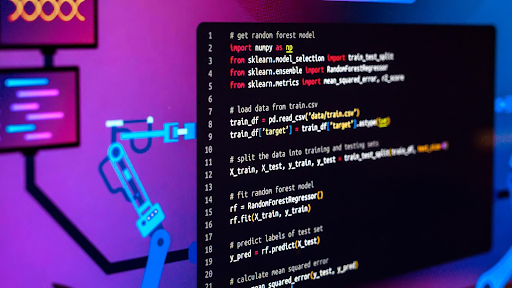To sign up for our daily email newsletter, CLICK HERE
The ability to write neat code has become a requirement in today’s software development environment. In working environments where teams are often spread across various time zones, the importance of producing code that is easy to understand, maintain and scale cannot be overstated for achieving long term success. Whether you’re a coder or just beginning your journey in programming, adhering to the principles of clean code can greatly enhance the quality of your work and streamline collaborative efforts. Here are top 5 guidelines, for crafting code that every developer ought to adhere to.

By following best practices for clean code (Readable, Simple and well structured with a comprehensive documentation), software development companies, like https://yalantis.com/ can write high-quality maintainable code. These practices help in better cooperation, less bugs and more efficient updates that ultimately result in shorter development cycles with comprehensive software.
1. Using Descriptive Names
Names that are detailed and accurate.
Writing code cleanly involves an element; giving your variables and functions names that are meaningful and descriptive.This way the code’s intent can be grasped by looking at the names of the functions and variables. No detailed explanations needed.A prime example is naming a userAccountBalance instead of something obscure, like uab or balance.
Steer clear of using single letter variables.
It’s best to steer away from using single letter variables unless they serve as loop counters such as i or j. Opt for longer and more descriptive names instead as they provide context and help fellow developers (and your future self!) grasp the code’s purpose better.
Opting for names can greatly speed up the comprehension of your code’s intent and boost readability and maintainability, for all members of the development team.
2. Keep Your Functions Concise and Targeted
The concept of the single responsibility principle.
When writing a function it’s important to have a role in mind for it to perform well during testing and debugging without causing issues elsewhere in the codebase. This rule isn’t limited to functions alone ; it’s also relevant when dealing with classes and modules. For instance if you have a function named calculateShippingCostits primary task should be calculating shipping costs rather than dealing with input from users or accessing databases.
Keep the function length within limits.
Long functions may seem daunting and hard to understand at times.By keeping functions short—usually limited to 20 to 30 lines—you can enhance readability. Simplify complexity.If you notice a function becoming too lengthy it’s worth considering dividing it into more specific functions.
Breaking down functions into clearly defined units makes it simpler to grasp them and ensures easier maintenance and testing processes, in software development projects that adhere to the single responsibility principle for writing cleaner code that is modular and enhances project manageability.
3. Simplify Complex Conditions
When code is heavily layered with nested structures, like statements it becomes challenging to read and upkeep it effectively.To simplify the logic and make it more manageable it’s advisable to opt for guard clauses or early returns than having numerous if statements nested on top of each other as an alternative approach. For example:
Instead of (python):
if user.is_active:
if user.has_subscription:
if user.subscription.is_valid():
return True
Flatten the logic (python):
if not user.is_active or not user.has_subscription or not user.subscription.is_valid():
return False
return True
Simplifying the structure. Streamlining logic enhances readability by making it simpler to track the program flow without becoming tangled in multiple layers of conditional statements.
4. Write Comments Sparingly and Focus on the “Why”
Comments can provide guidance but shouldn’t be relied upon to compensate for code quality; focus on crafting code that speaks for itself rather than explaining it through comments excessively; if code heavily relies on comments, for comprehension it might be beneficial to refactor it for better clarity.
When providing comments, in code snippets or scripts it’s best to use them to justify why a certain choice was made rather than just describing the functionality. For instance:
# Fetching data from the external API because it updates every minute
data = fetch_external_api()
This statement clarifies the purpose of calling the API rather than describing the functionality of the line of code.
When writing code comments, focus on explaining your intentions and reasons rather than stating the obvious behaviors of the code itself. It’s best to prioritize writing code that’s easy to understand without relying too much on comments.
5. Crafting Unit Tests
Testing plays a role in maintaining code cleanliness as it verifies the functionality of your functions and aids in detecting bugs early on by writing tests for both standard and unusual scenarios. An essential aspect of the development process particularly, within agile settings.
Engage in Test driven development (also known as TDD).
In Test driven development (TDD) you start by writing tests before diving into the code implementation process. This approach helps in ensuring that each code segment serves a defined purpose ultimately leading to design choices and minimizing bugs in the final product.
Regularly testing enhances the dependability of code and aids in identifying issues at a stage of the development process.Incorporate unit. Whenever feasible, follow TDD practices to guarantee the creation of clean and error free code.
Wrap Up
Crafting structured code goes beyond mere rule following – it involves adopting a mindset that prioritizes clarity and ease of maintenance in programming tasks. Whether it’s using names for variables or breaking down functions into concise chunks of logic adhering to these guidelines plays a crucial role in guaranteeing the scalability and comprehensibility of your codebase. Whether you’re coding independently or collaborating with a team, these principles pave the way for enhancing the quality of your code and ensuring the longevity of your software projects.